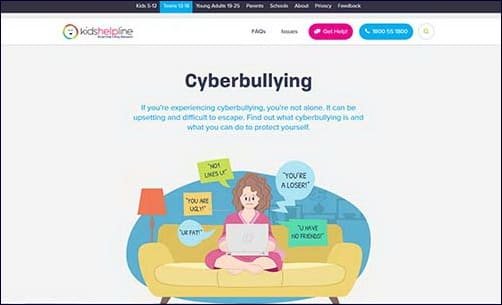Don't feed the trolls: dealing with Cyber Bullying
|
Cyber Bullying is a primitive, ugly and harmful activity which should not occur in our technologically evolved contemporary social environment. It’s up to all of us to offer support and solutions to ending online antisocial behaviour.
Cyber Bullying is a major issue in our society today. Nearly all of us have a smartphone in our pocket or a laptop with us on a daily basis and accompanying internet access. The degree of connection these devices allow us to have with others is incredible. We can talk freely with friends or family overseas instantly, share photos and videos of our day and contribute to posts made by others on social media platforms. We may also access almost any information we require from a simple search engine query. This is the positive side of our state of connectivity. However, the negative side is much more grisly.
Virtual harassment
If we decide to ruin somebody else’s day by harassing them via text, email or spreading tagged inflammatory material through social media, the results can be devastating. Because of the nature of the internet, an attack on another person can spread virally, involving hundreds of other parties in a matter of minutes. Cyber Bullying can lead to social isolation, depression, fatigue and in some circumstances, suicide.
Faceless cowards
The most concerning aspect of Cyber Bullying is that often attackers are cowardly (keyboard warriors), hiding behind a digital façade which masks their identity. Sometimes, their intentions and motivations are difficult to gauge as well, making them even harder to deal with.
Here is what to do |
Should you be affected by Cyber Bullying, there are steps you may take to diffuse the situation.
Be ready
Collect all possible evidence. Do not remove the threats written on social networks or messages, print them first. Take a screenshot so you have proof. Record all dates of incoming calls, and keep the phone numbers from which these threats were received.
Tell someone
Tell someone - do not let this fester inside you. Do not allow yourself to become isolated from the situation. Flag the offensive material and report it to the appropriate moderator.
Do not react
Do not engage the aggressor. This will only prompt them to escalate the scale of their efforts. Instead, switch off your device or deactivate your account for a while and spend time with your friends or family to avoid feelings of isolation.
Watch what you are posting
Be mindful of your own actions towards others. Make sure you’re not attracting unwanted attention by using inflammatory language or using any disrespectful material to support your opinions online.
Get Help |
If you feel that you need help, do not wait for the consequences and contact the relevant organisations that specialise in eSafety.
Office of the eSafety Commissioner
Visit the Office of the eSafety Commissioner website to find more information (opens in a new window)
Online service available
Ages: 5 - 25
Here you can find a lot of information on this issue and make a complaint.
(Screenshot: Office of the eSafety Commissioner)

ACORN (Australian Cybercrime Online Reporting Network)
Visit the ACORN website to find more information (opens in a new window)
The network provides a huge range of information on cybercrime.
ACSC (Here you can make a report).
(Screenshot: ACORN)

Beyond Blue
Visit the Beyond Blue website to find more information (opens in a new window)
Chat online (3 pm - 12 am)
1300 22 4636 (24/7)
(Screenshot: Beyond Blue)

Kids Helpline
Visit the Kids Helpline website to find more information (opens in a new window)
Ages: 5 - 25
1800 55 1800 (24/7)
(Screenshot: Kids Helpline)

vpnMentor
Visit the vpnMentor website to find more information (opens in a new window)
The LGBTQ+ Guide to Online Safety
The guide helps you take control of interactions online and makes you feel safer.
(Screenshot: vpnMentor)

|
|
Did you find mistakes? Please feel free to relay your comments, suggestions or corrections, in case of omission or mistake.
|





